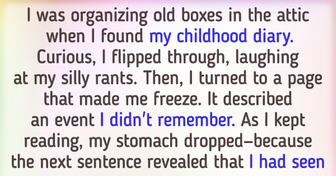12 Families Who’d Make You Laugh and Cry at the Same Time

You walk along the beach one day, and in the distance, you see something. What? Is that a person made of plastic? You can’t believe it! It’s a giant Lego man!
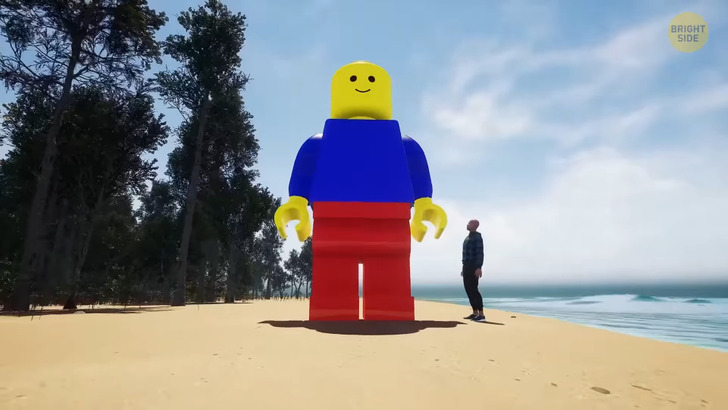
Several 8 ft Lego men were washed up on beaches, one in 2007 in the Netherlands and another in 2008 in England. Then a couple more Lego men were found in 2011 in Florida and California. Is there an unknown colony of life-sized Lego people hidden somewhere on Earth? Unfortunately, not, so put that vacation to giant Lego land on hold. What you see was a performance by a Dutch guerrilla artist. There was no real reason for doing it. He just wanted to “bring some kindness into everyday life.”
There are 720,000 miles of coastline in the entire world. It’s estimated that 31% of these contain beaches. If we consider the ocean’s size, we can expect something strange now and then to pop up. But some things could be of good value. There are not many places other than a bathtub where you’d expect to find a rubber ducky or maybe in a swimming pool. But there have been many found on many beaches all over the world. And they all relate to a single incident.
In 1992 a shipping container fell off its ship along a journey from Southeast Asia to the USA. 29,000 rubber ducks inside the container-managed to escape their iron cage. And they began their own journey, following many different currents in the ocean. The first ones were found in Alaska a year later. They had traveled a huge 2,000 miles from their departure point. One scientist took this opportunity to map the journeys of these ducks.

It was a rare chance to find interesting facts about how the currents work. Their research found that some ducks also traveled to Japan through the Bering Strait. Some moved with ice across the North Pole, and some even passed over the Arctic, where the Titanic sank. Many of them weren’t found and continued even longer journeys. Probably they will sail the seas for a further 15 years!
The last one passed by Greenland and finally arrived in England in 2007. There were even some that were frozen in ice sheets at the North Pole. Who knows, maybe in a million years from now, humans will study these ducks. And learn about the interesting details of bathing from our time.
In 2018, a couple of beach walkers were enjoying the Western Australian coast one day when they found an old bottle. They thought it looked pretty neat, so they kept it as a nice ornament for their shelf. They then realized there was something inside of it. Taking out what appeared to be something rolled up and dried it out, they were amazed to find that it was a message in a bottle.
After seeking professional advice on where it came from, it was an authentic message from a German ship dated 12 June 1886! This holds the record for the oldest message in a bottle. The note relates to a German experiment; thousands of these bottles were also thrown overboard. It was an experiment, and they requested whoever found the bottles contact them. I wonder if 132 years is not too late.
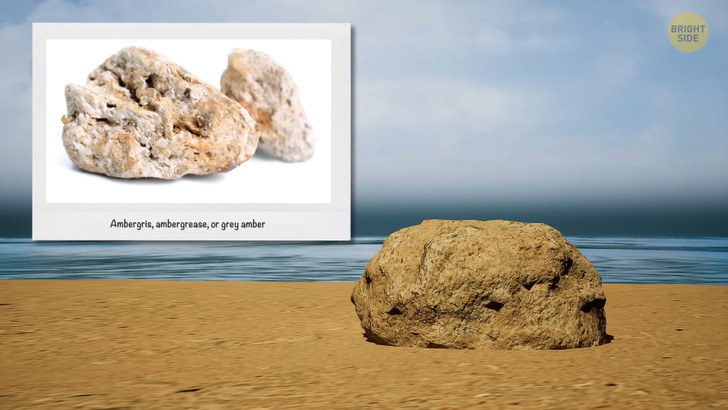
In 2012 an eight-year-old boy stumbled across an interesting rock, and taking it home to his parents, they were told it was an “ambergris”. You likely wouldn’t have heard of this. And either way, when they learned, it was called the “treasure of the sea” and “floating gold”. It’s been used by humans for around 1,000 years to make perfume.
This rare element allows the perfume to have a pleasant, long-lasting smell. It was unknown where this magical thing came from for a long time. But today, it’s understood that it comes from inside Cachalot Whales, the leftover material from food that they spit out. But regardless of its disgusting origins, one of these could fetch you a huge $65,000. Not a bad allowance!
We all like bubbles in our baths, but one beach in Queensland, Australia, it experiences a massive amount of foam on its beaches every year. But how could this occur? Is it a soapy beach? All seawater contains dissolved salts, fats, proteins, and algae, with some detergents and other materials.
And when this water is agitated, it bubbles. If you were to take a bottle of seawater and shake it vigorously, you would get bubbles from just that small amount. So, when tropical storms hit the sea at certain beaches, it has the same effect but on a much larger scale.
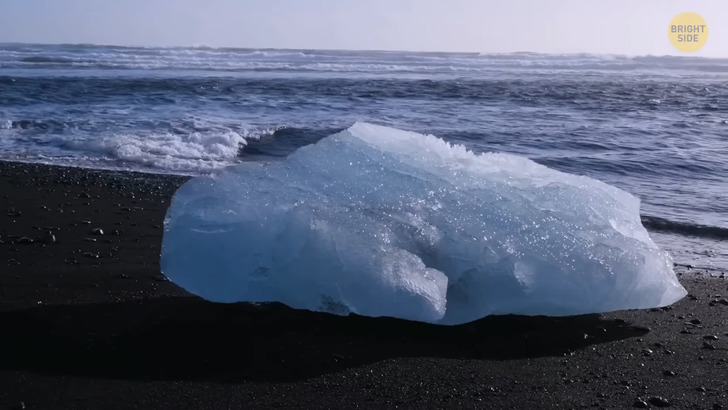
Iceland is otherworldly and beautiful, and its beaches have rare black sandy beaches. This is because of the constant volcanic activity. But this doesn’t make it amazing enough. On the southeast part of the island, icebergs wash up on the shore as well. These bits of ice break off from one of Europe’s largest glaciers, where they’ve been for thousands of years. And then make their journey south, making Iceland beaches even more beautiful.
In 2016 above the arctic circle in Siberia, thousands of balls of ice were found lying on the beach. The locals had never seen this before, and the sizes ranged from as small as tennis balls to the size of a volleyball. It’s as though a massive snowball competition was held, and then everyone just left.
Although a snowball competition in the Arctic circle does sound amazing. This naturally occurring phenomenon is due to sludge-ice forming and binding together with the effects of the wind and water. And gradually build up as they roll in the shallows. The same thing can happen in inland lakes, which also occurred in Lake Michigan in 2013.
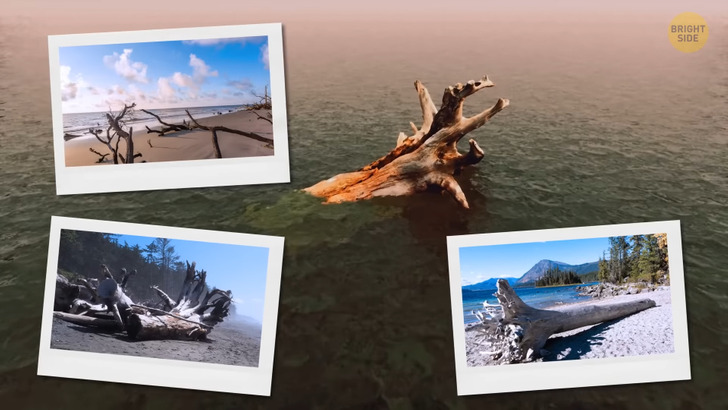
Driftwood isn’t strange on the beach, but their “drift logs” in parts of Washington are a whole different story. The Red Cedar is a typical visitor to the shores, originating north from the Canadian border and then gradually floating southwards. Their sizes reach 200 ft long.
The Kraken has been in mythological history for centuries. It was scaring sea-faring people. But could you imagine it lying on your beach? One was found in New Zealand. A Giant squid was discovered by some local divers who were hoping to go for a swim. Until they stumbled across this beast. Although it was 13 feet long, it was only a young squid. Adults can reach up to 43 ft. And where there’s a young squid, there are probably older ones lurking nearby. A good sign not to go for a swim on that particular beach!
In 2009 a container ship left Taiwan and suddenly disappeared without a trace. The massive vessel couldn’t be located without contact with its crew. Then 9 years later, it mysteriously reappeared along the beach off Myanmar. No signs of a crew ever being there, or any cargo was on board. It was deemed as a ghost ship. But once it was located, the truth came out that it was scheduled to be dismantled and somehow detached, slowly drifting away on its own voyage.
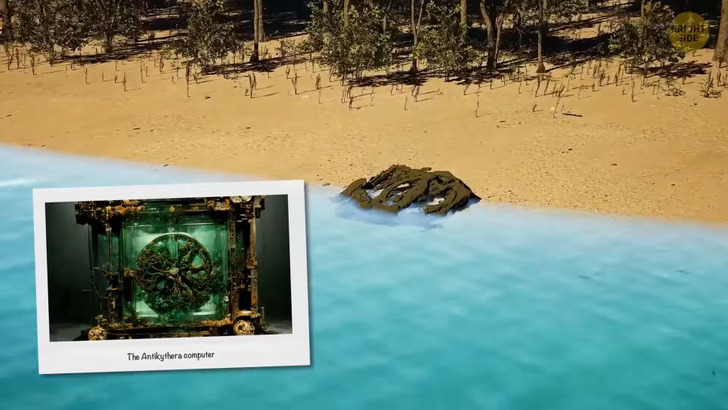
Finding a computer on a beach wouldn’t be much of a find, given the seawater would ruin it. However, a much older computer was found in Greece.
The Antikythera computer was found in a shipwreck and is believed to be the earliest computer form. It was made as far back as 200 BCE, much earlier than when “pong” became popular. This computer was so advanced with its prediction of astronomical positions that there was nothing like this up until the 14th century.
But probably the strangest thing that has been found on a beach is an entire city! Pavlopetri, in Greece, was once a populous city until it submerged around 1000 BCE. It’s one of the oldest underwater cities in the world. What’s really fascinating about this place. It has an almost perfect town plan. You can swim around and check out streets, buildings, and other interesting places.





